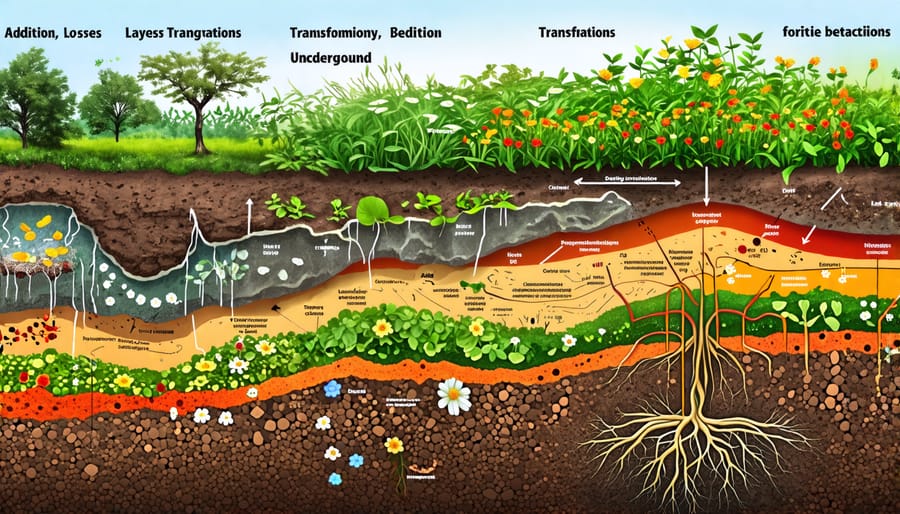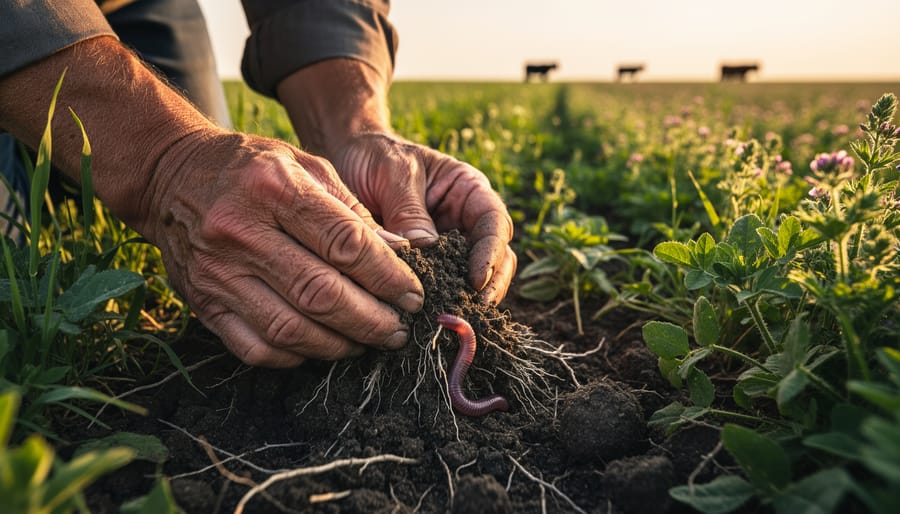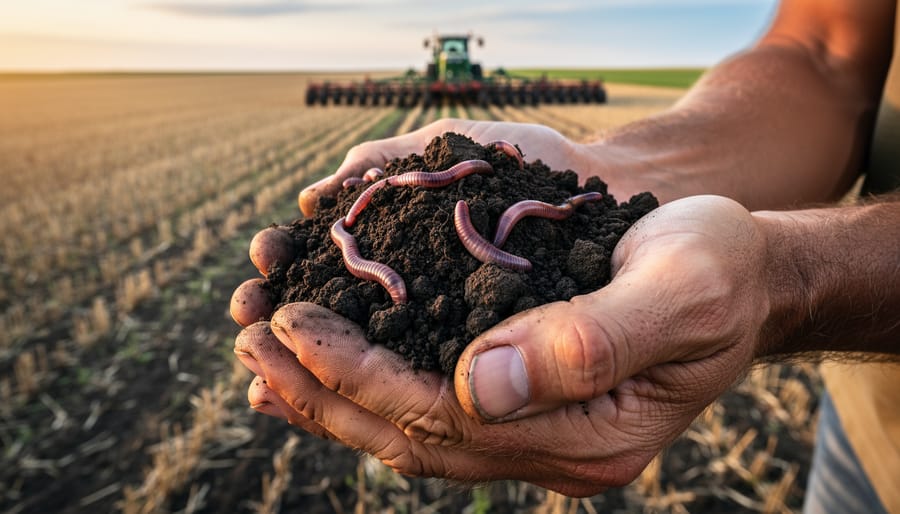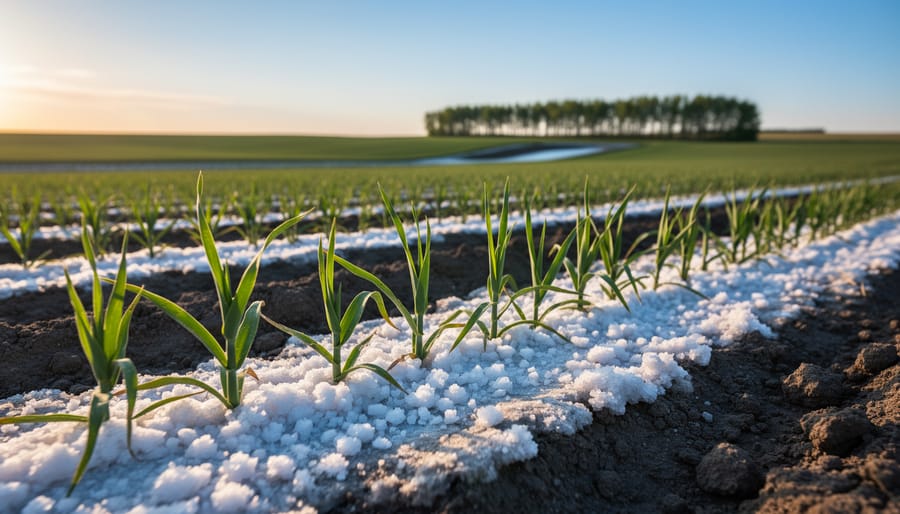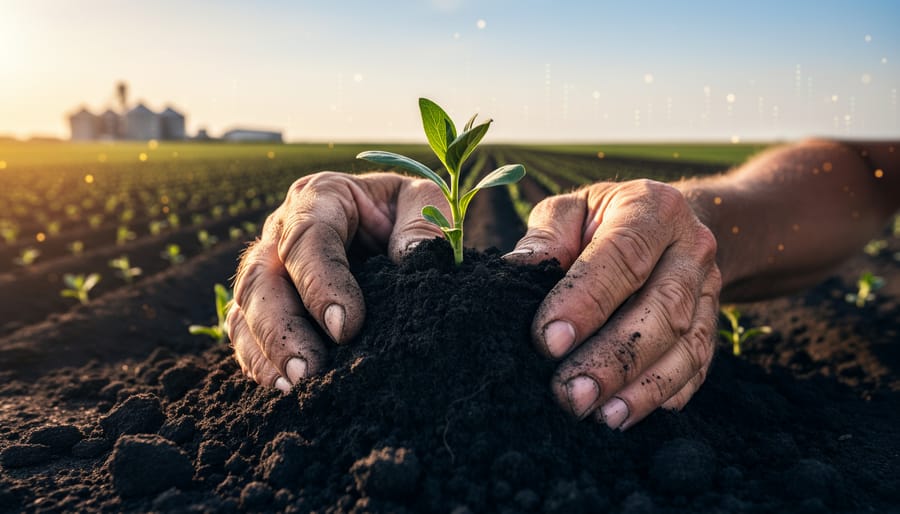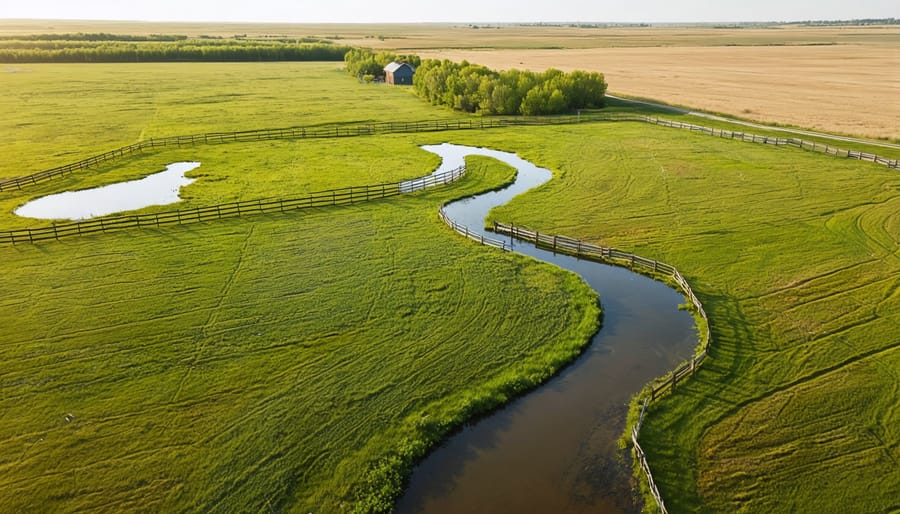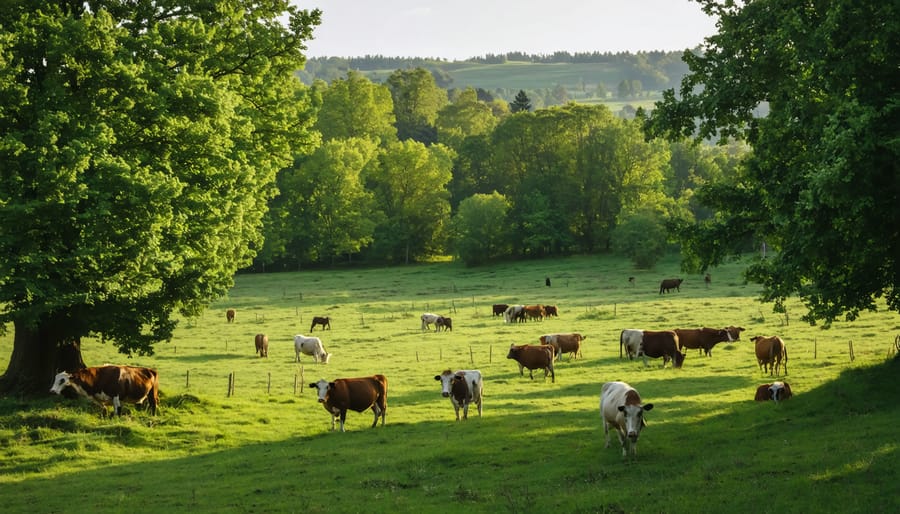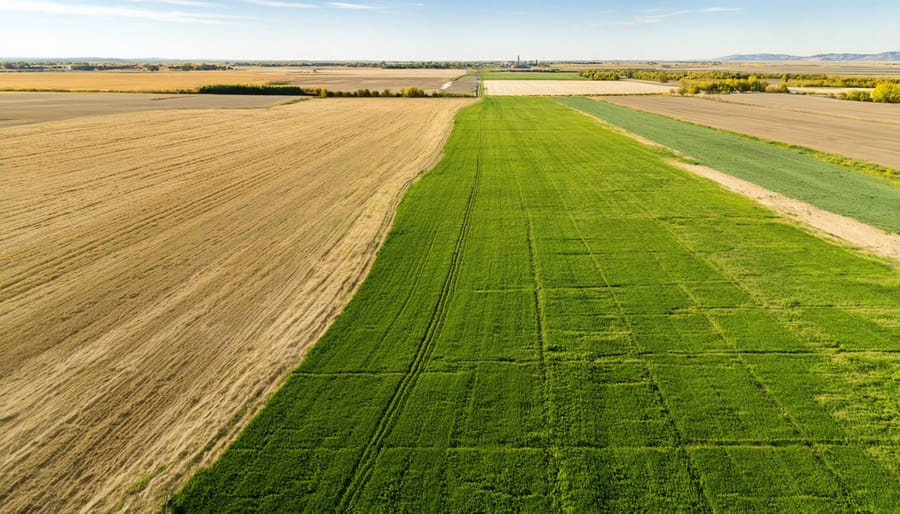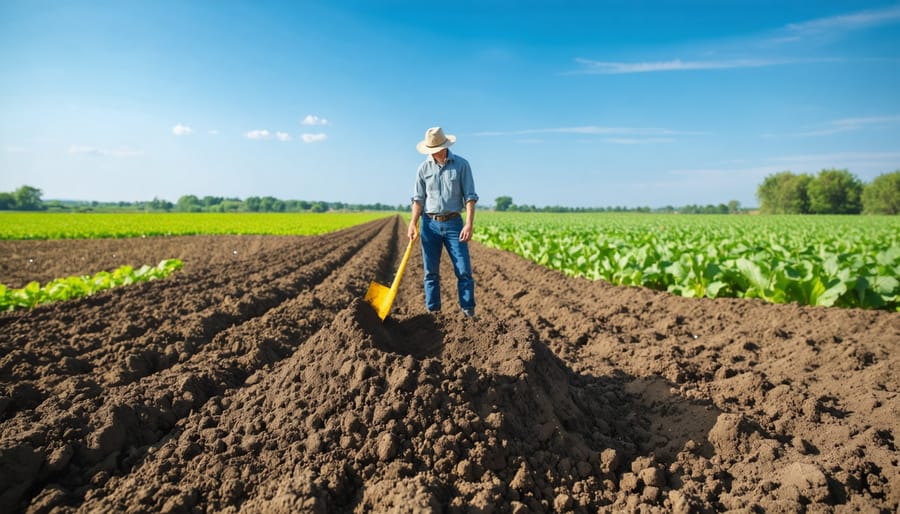Soil is the foundation of life on Earth, and understanding how it forms is crucial for sustainable agriculture. Four key processes shape the dirt beneath our feet: additions, losses, translocations, and transformations. These processes work in concert over centuries, adding and removing materials, moving particles and chemicals, and altering the very nature of soil components. By grasping how parent material, climate, organisms, topography, and time interplay through these processes, we gain invaluable insights into managing soil health. Equipped with this knowledge, farmers can make informed decisions to preserve and enhance the vital resource that sustains us all. Join us as we dig deep into the fascinating world of soil formation and unearth practical wisdom for nurturing the land that feeds us.
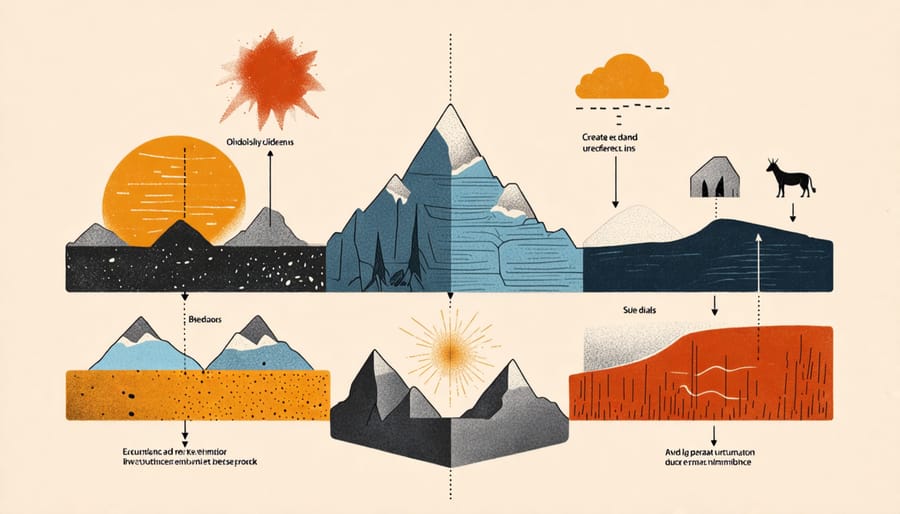
Weathering: Breaking Down Bedrock
Physical Weathering
Physical weathering is a crucial soil forming process that involves the fragmentation of rocks without altering their chemical composition. In the Alberta region, temperature fluctuations play a significant role in this process. As rocks are exposed to repeated cycles of heating and cooling, they expand and contract, leading to stress and eventual breakage. Frost action is another key factor, particularly in areas with cold winters. When water seeps into rock crevices and freezes, it expands, exerting pressure that can split rocks apart. Additionally, abrasion from wind, water, and glacial action physically grinds down rocks over time. These weathering processes gradually break larger rocks into smaller particles, increasing the surface area exposed to other soil forming factors. By understanding the mechanisms of physical weathering, farmers can better predict soil characteristics and make informed decisions about land management practices that promote healthy, productive soils.
Chemical Weathering
Chemical weathering is a crucial soil forming process that involves the dissolution of minerals by acidic water and the conversion of primary minerals to clay. When rainwater interacts with carbon dioxide in the atmosphere, it forms a weak carbonic acid. As this acidic water percolates through the soil, it reacts with minerals, causing them to dissolve and release nutrients. Over time, this process breaks down larger particles into smaller ones, increasing the clay content of the soil. Clay particles have a high surface area and the ability to hold onto nutrients and water, which is beneficial for plant growth. However, excessive clay can lead to poor drainage and compaction. Farmers can manage the effects of chemical weathering by monitoring soil pH levels and applying amendments like lime to counteract acidity. Understanding the role of chemical weathering in soil formation enables growers to make informed decisions that promote healthy, productive soils.
Soil Organic Matter Accumulation
Plant Residue Breakdown
Plant residue breakdown is a crucial soil forming process that involves the decomposition of organic matter such as roots, leaves, and stems into humus. This process is driven by soil microorganisms, including bacteria and fungi, which break down the complex organic compounds into simpler forms. As the plant residues decompose, they release essential nutrients like nitrogen, phosphorus, and potassium back into the soil, making them available for plant uptake. The resulting humus also improves soil structure, increases water retention, and enhances soil fertility. To promote plant residue breakdown, farmers can implement practices such as crop rotation, cover cropping, and reduced tillage, which help maintain a healthy soil ecosystem and support the natural decomposition process.
Soil Food Web
The soil food web, a complex network of bacteria, fungi, and other soil organisms, plays a vital role in organic matter cycling. These microbes break down plant residues and animal wastes, converting them into nutrient-rich humus that improves soil structure and fertility. Bacteria are the primary decomposers, quickly breaking down simple organic compounds, while fungi specialize in decomposing tougher materials like lignin and cellulose. Protozoa and nematodes feed on bacteria and fungi, releasing nutrients in plant-available forms. Earthworms and other soil animals further assist in mixing and aerating the soil. By supporting a diverse and active soil food web through practices like reduced tillage, cover cropping, and organic amendments, farmers can enhance healthy soil function and reduce reliance on external inputs.

Eluviation and Illuviation
Podzolization Process
Podzolization is a soil forming process that occurs in cool, humid climates with coniferous forests, resulting in distinct soil horizons. As water percolates through the soil, it dissolves organic acids from decomposing plant matter, which then react with minerals in the upper layers. This causes eluviation, where clay particles, iron, and aluminum oxides are leached from the topsoil, leaving behind a light-colored, ash-like layer known as the E horizon. The dissolved materials are transported downward and deposited in the B horizon, creating a reddish or brown layer enriched with clay and iron oxides. Over time, this process leads to the formation of podzols, characterized by their acidic nature and low fertility. Understanding podzolization is crucial for farmers in regions prone to this process, as it affects soil structure, nutrient availability, and crop growth. By implementing sustainable practices such as liming, organic matter addition, and cover cropping, farmers can revitalize your soil and mitigate the effects of podzolization, ensuring long-term productivity and health of their agricultural land.
Soil Texture Changes
Over time, soil texture can change due to the movement and accumulation of clay particles within the soil profile. This process, known as clay translocation or lessivage, occurs as water percolates through the soil, carrying fine clay particles from upper horizons to lower ones. As a result, the clay content increases in the subsoil, forming a clay-rich B horizon called the argillic horizon. Simultaneously, the upper layers may become depleted of clay, leading to the development of a sandy E horizon. These textural changes can significantly impact soil properties, such as water retention, drainage, and fertility. Understanding these processes is crucial for farmers to adapt their management practices accordingly, ensuring optimal crop growth and soil health. By recognizing the signs of clay translocation, such as the presence of clay films on soil aggregates or changes in soil color, farmers can make informed decisions about tillage, irrigation, and nutrient management to maintain the long-term productivity of their soils.
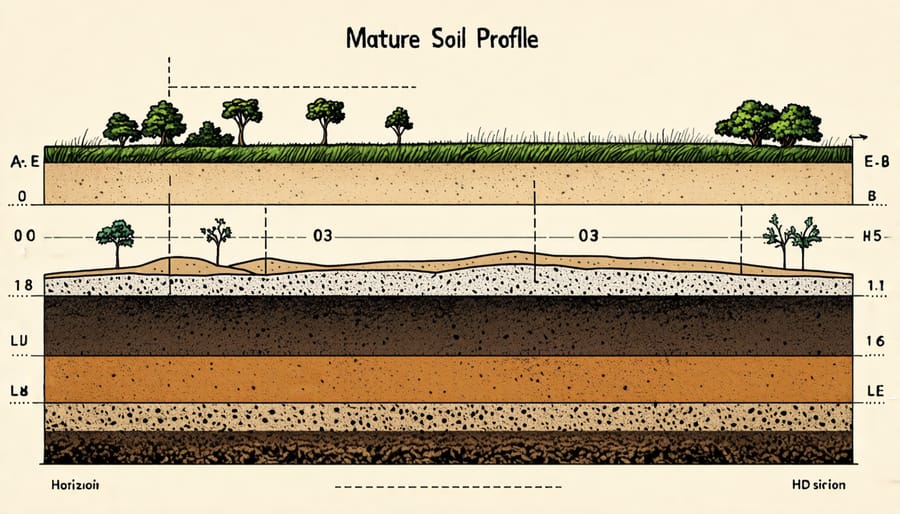
Soil Profile Maturation
A Horizon
The A horizon, also known as topsoil, is the uppermost layer of soil profiles. This nutrient-rich layer is darker in color due to the accumulation of organic matter from plant and animal residues. The A horizon is teeming with life, including earthworms, insects, fungi, and bacteria that play crucial roles in decomposition and nutrient cycling. These organisms help transform organic matter into humus, which enhances soil structure, water retention, and fertility. The depth of the A horizon varies depending on factors such as climate, vegetation, and management practices. Maintaining a healthy A horizon is essential for optimal plant growth and sustainable agriculture in the Alberta region and across Canada.
E Horizon
The E horizon, also known as the eluvial layer, is a light-colored soil zone that has been leached of clay, iron, aluminum, and organic matter. This process, called eluviation, occurs as water percolates through the soil profile, carrying these components to deeper layers. The remaining soil in the E horizon is often pale in color and composed primarily of sand and silt particles. In some Canadian soils, particularly Podzols found in forested regions, the E horizon can be quite distinct. Its properties significantly impact soil fertility and water-holding capacity, making it an important consideration for farmers and land managers aiming to optimize crop growth and minimize erosion.
B Horizon
The B horizon, or subsoil layer, is characterized by an accumulation of clay particles and metal oxides that have been transported down from the A horizon through the process of illuviation. As water percolates through the soil profile, it carries these smaller particles, which then accumulate in the B horizon, giving it a distinct color and texture compared to the layers above and below. This enrichment of clay and minerals contributes to the B horizon’s role in storing nutrients and water for plant growth. Understanding the properties of the B horizon can help farmers make informed decisions about irrigation, fertilization, and crop selection to optimize soil health and productivity.
Conclusion
Understanding the four soil forming processes is essential for Alberta farmers and agricultural professionals who aim to practice sustainable soil management. By recognizing how parent material, climate, organisms, topography, and time interact to shape soil properties, farmers can make informed decisions about cultivation techniques, crop selection, and nutrient management. Applying this knowledge allows for the development of tailored strategies that optimize soil health, productivity, and long-term sustainability.
For example, farmers can use their understanding of weathering and decomposition to select crops that thrive in their specific soil type and climate. They can also implement practices like cover cropping and reduced tillage to promote beneficial organism activity and minimize erosion. By working with the natural soil forming processes, rather than against them, Alberta farmers can cultivate resilient and productive agricultural systems that support both their livelihoods and the environment. Embracing these principles is key to building a thriving and sustainable soil management approach for generations to come.

